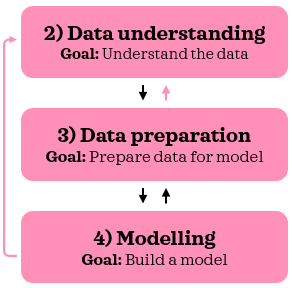This post is the second of three sequential articles on steps to build a sentiment classifier. Following our exploratory text analysis in the first post, it’s time to preprocess our text data. Simply put, preprocessing text data is to do a series of operations to convert the text into a tabular numeric data. In this post, we will look at 3 ways with varying complexity to preprocess text to _tf-idf _matrix as preparation for a model. If you are unsure what tf-idf is, this post explains with a simple example.
Photo by Domenico Loia on Unsplash
Before we dive in, let’s take a step back and look at the bigger picture real quickly. CRISP-DM methodology outlines the process flow for a successful data science project. _Preprocessing data _is one of the key tasks in the **data preparation **stage.

Extract from CRISP-DM process flow
0. Python setup
This post assumes that the reader (👀 yes, you!) has access to and is familiar with Python including installing packages, defining functions and other basic tasks. If you are new to Python, this is a good place to get started.
I have tested the scripts in Python 3.7.1 in Jupyter Notebook.
Let’s make sure you have the following libraries installed before we start:
◼️ Data manipulation/analysis: numpy, pandas
◼️ Data partitioning: sklearn
◼️ Text preprocessing/analysis: nltk
◼️ Spelling checker: spellchecker (pyspellchecker when installing_)_
Once you have _nltk _installed, please make sure you have downloaded ‘stopwords’ and ‘wordnet’ corpora from _nltk _with the script below:
#text-preprocessing #applied-text-mining #python #data-science #nlp